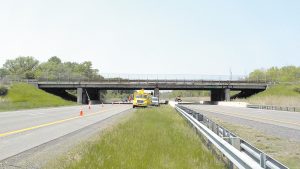I receive a lot of questions about how schools are funded and how that money is spent. There is good reason for these questions because a lot of money is involved. State aid to schools comprises $21.8 billion — roughly 24 percent — of our $92.3 billion state operating budget. In addition, it is estimated […]
Get Instant Access to This Article
Become a Central New York Business Journal subscriber and get immediate access to all of our subscriber-only content and much more.
- Critical Central New York business news and analysis updated daily.
- Immediate access to all subscriber-only content on our website.
- Get a year's worth of the Print Edition of The Central New York Business Journal.
- Special Feature Publications such as the Book of Lists and Revitalize Greater Binghamton, Mohawk Valley, and Syracuse Magazines
[bypass-paywall-buynow-link link_text="Click here to purchase a paywall bypass link for this article"].
I receive a lot of questions about how schools are funded and how that money is spent. There is good reason for these questions because a lot of money is involved. State aid to schools comprises $21.8 billion — roughly 24 percent — of our $92.3 billion state operating budget. In addition, it is estimated local school taxes raised about $20.3 billion in 2013. The New York Lottery also funds education and provided $3.04 billion in 2012, according to the latest data available. This amount represents all of the proceeds received by the lottery after paying prizes and administrative costs.
The state Education Department periodically publishes a report, called the “Fiscal Profile of New York State School Districts.” The report is based on data collected from the Annual Financial Report — an unaudited document which displays a district’s reported expenditures and revenues. The report provides a five-year snapshot — from 2007-2011 — on individual districts and how they compare in different categories and against the state average wealth.
Specifically, I want to share information on school districts in my 120th Assembly District, which include Fulton, Hannibal, Mexico, Oswego, Phoenix, Pulaski, Sandy Creek, Altmar-Parish Williamstown, Baldwinsville, Belleville Henderson, and Central Square. The overwhelming majority of school revenue comes from state aid and local property taxes.
The amount a school district receives in state aid and from local property taxes varies widely among school districts. The amount a school gets in state aid depends on, among other things, the wealth of the area where the school is located. Since our area is a low-wealth area — in comparison to other parts of the state such as Long Island and the New York City suburbs — we receive more state aid in comparison to the revenue raised through local property taxes.
When you combine the 11 school districts in my Assembly district, about 55 percent of the budgets are funded by state aid. As a result, our region has largely been subject to the state’s fiscal management, and the changing economy. Through 2007-2011, our economy experienced a depression and has slowly been recovering. Beginning in 2009-10, monetary restraints caused the state to reduce its budget, which resulted in out-year cuts. In 2011-12, the state cut aid to schools by more than $2.5 billion. This too was to close the state budget gap. Districts and the state refer to this as Gap Elimination Adjustment (GEA). This year, we restore $602.1 million of that GEA to districts.
One of the biggest items that sticks out in the report is the drop in student enrollment. Throughout the 11 school districts, student enrollment declined by 2,319 or 8 percent during the five years. This puts additional financial stress on our schools because their fixed costs have remained the same but they lose state aid as enrollment drops. Other items that have been cost drivers for schools as of late have been teacher retirement costs, which increased by $3.7 million or 26 percent, and health-care costs, which increased by $7.1 million or 14 percent.
I simply wanted to share this information because it provides a snapshot of our school districts’ fiscal situations and sheds some light on a topic of concern to many people. To see more of this data, visit http://www.oms.nysed.gov/faru/Profiles/profiles_cover.html.
William (Will) A. Barclay is the Republican representative of the 120th New York Assembly District, which encompasses most of Oswego County, including the cities of Oswego and Fulton, as well as the town of Lysander in Onondaga County and town of Ellisburg in Jefferson County. Contact him at barclaw@assembly.state.ny.us, or (315) 598-5185.



